Smoke Signal
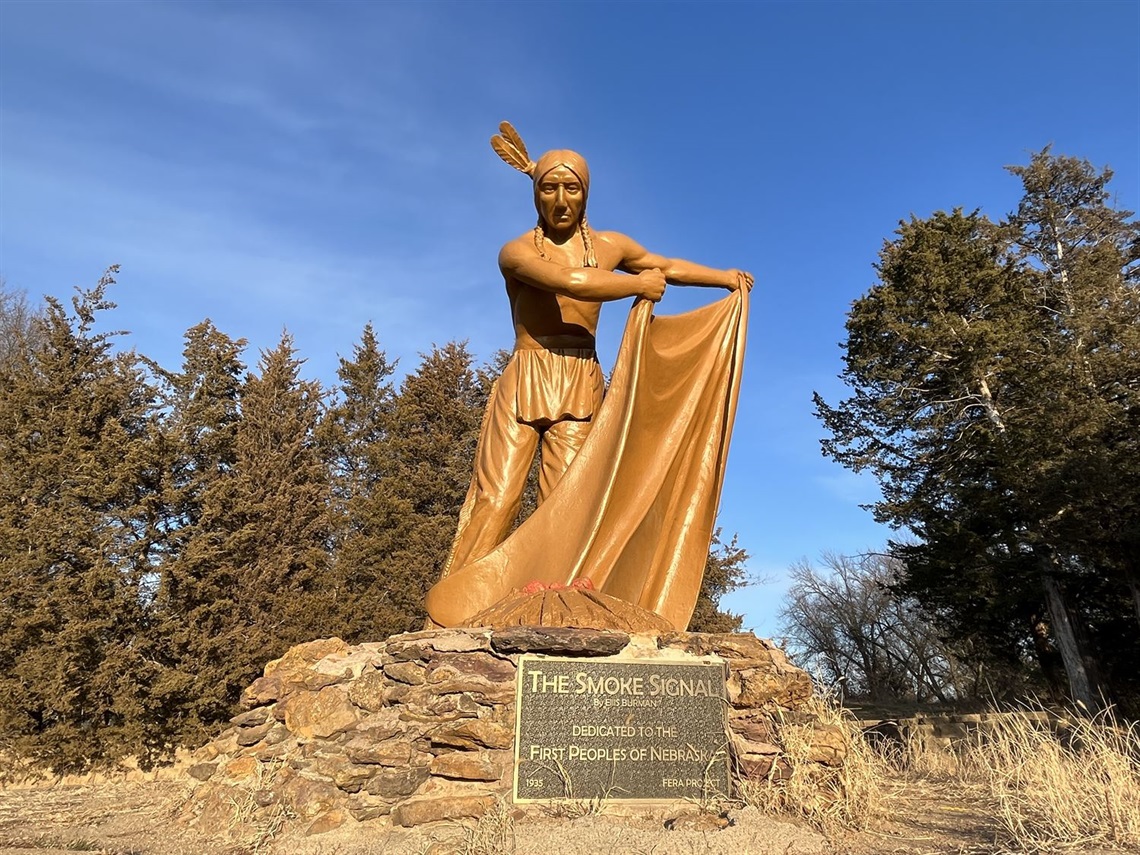
About the Sculpture
Ellis Burman’s best-known sculpture, “The Smoke Signal” was created as part of the WPA’s Federal Art Project. Burman wanted to connect Lincoln to the Native Americans who originally inhabited the land, but also wanted to ensure that this monument was done as accurately as possible. He studied the tribes of the area and their history to accomplish this. The large bronze-colored stone figure is supposed to have a feather, but unfortunately the sculpture is often vandalized as shown in the images below.
This Native American figure is depicted holding a blanket in order to make smoke signals, which were used as warning signals amongst the tribes in this case, warning that the white man was coming. This figure stands behind a knoll on purpose and faces away from the city to signify the disdain for the approach of civilization. Burman received approval from the tribes for his respect and accuracy. Over 100 people from the Sioux, Ponca, Winnebago and Omaha tribes attended the dedication in September 1935. These tribes stayed on the park grounds and held “a pow-wow--including all their tribal and ceremonial dances in full Indian regalia”.
In his dedicatory remarks, Mr. Lawrence said: ‘This monument is dedicated to the memory of the rich and glorious past----to the aspirations of an unknown future. Today there is peace and united effort between the white man and the Indian.’
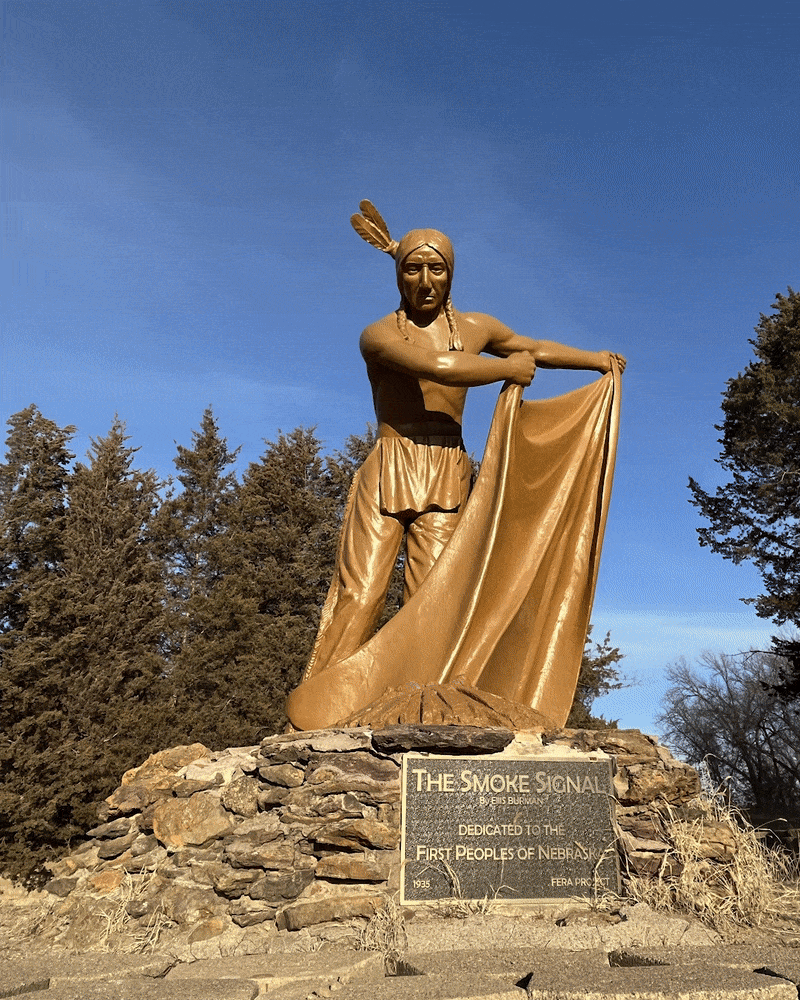
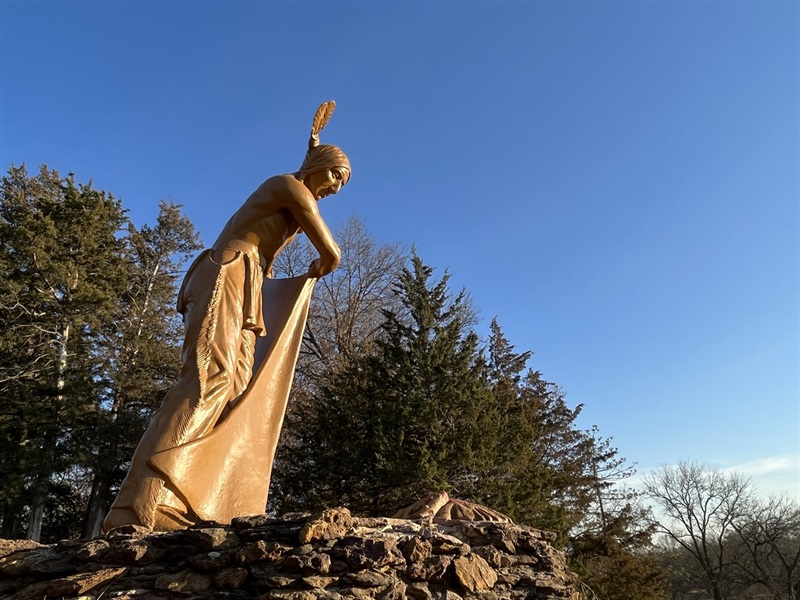
Pre-renovation:
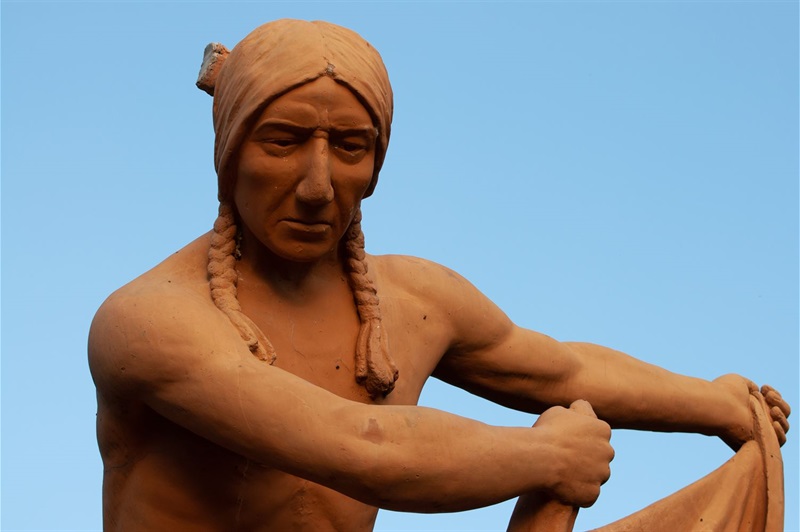
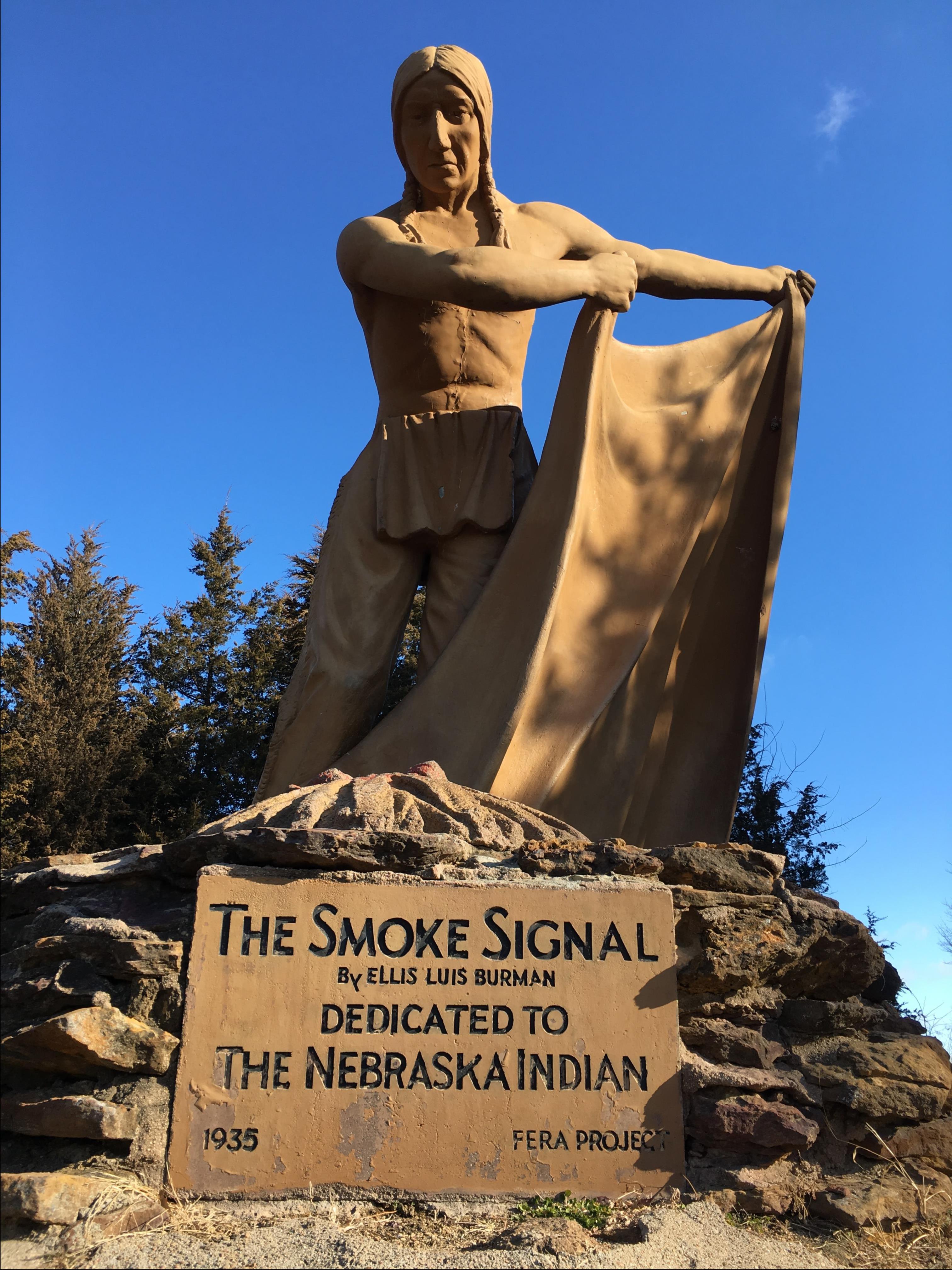
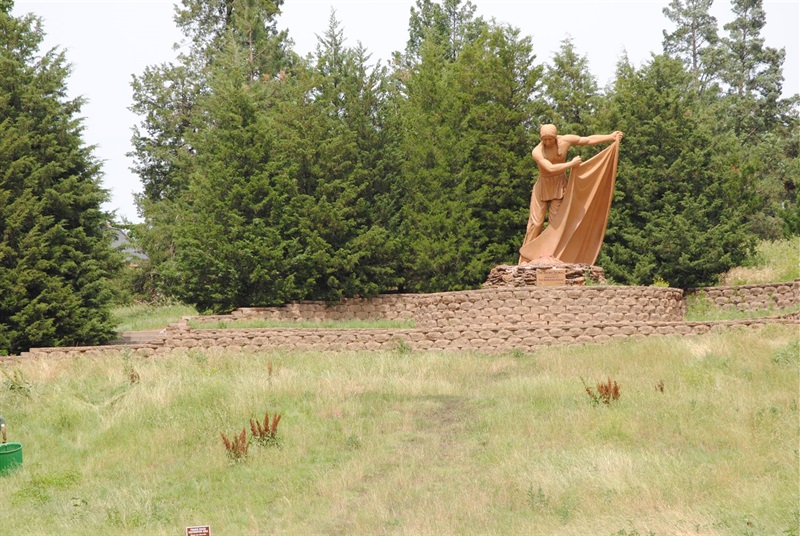
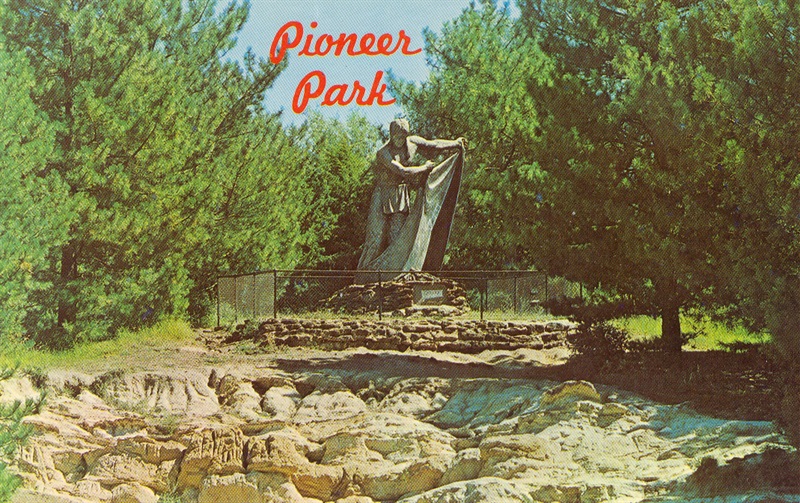
About the Sculptor Ellis Luis Burman
Born in 1902 in Toledo, Ohio, Ellis Luis Burman studied at the Art Institute of Chicago, but moved to Lincoln, NE with his wife around the 1930s. He worked predominately as a commercial artist at the beginning of his career. His first major sculptural project was a commission from the Lincoln Woman’s Club to honor the pioneer women who helped settle the west. During the Great Depression, Burman found work with the Works Progress Administration (WPA) or the Federal Emergency Relief Administration (FERA) to help beautify the city of Lincoln. During this time, he created several notable monuments. One being a memorial to the veterans of the state, known as “War and Victory”. His most well-known work was also created at this time, titled “The Smoke Signal” and was dedicated to all Nebraska Native Americans.
Though his notable marks on the city of Lincoln were his monuments, he also helped create costumes for Lincoln’s holiday Storyland parade in 1935. This project potentially led him to his final career in Hollywood, where he became a movie prop master and created masks and other costumes.
Additional Information
Pioneers Park, 3201 S. Coddington Ave., Lincoln, NE 68522
Height: 15 ft.
Other articles about the sculpture:
Location
Pioneers Park, 3201 S. Coddington Ave., Lincoln 68522 View Map
40.775253, -96.762030
Pioneers Park, 3201 S. Coddington Ave. ,
Lincoln 68522
Pioneers Park, 3201 S. Coddington Ave. ,
Lincoln 68522
Smoke Signal